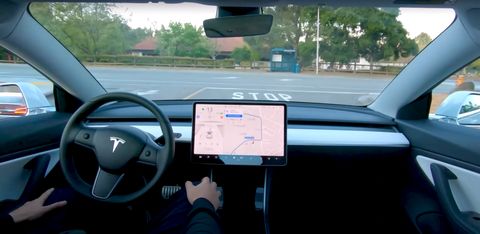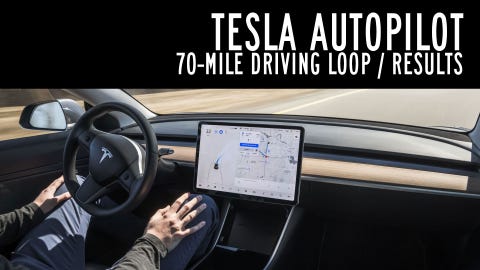- A survey conducted by the Insurance Institute for Highway Safety said drivers frequently abuse semi-autonomous driving systems.
- Hundreds of GM Super Cruise, Tesla Autopilot and Nissan ProPilot users were surveyed, and many said they would perform non-driving tasks while using the system, some of which were locked out due to driver inaction.
- Despite these findings, most users acknowledged that the driver monitoring system and autopilot locking are positive additions to the model’s safety features.
A few years ago, self-driving cars were thought to be just around the corner, but that prediction didn’t come true. Of course, you can hail a self-driving taxi in certain parts of the US, and companies including Tesla, General Motors, and Nissan all offer some form of semi-autonomous driving technology.
But there aren’t any fully self-driving cars on the market yet. Manufacturers, engineers and consultants around the world are working to make these self-driving cars a reality, but a combination of careful regulators and human design challenges has temporarily left the driver’s seat occupied.
Half equipped with this technology will perform non-driving tasks
According to survey data from the Insurance Institute for Highway Safety, drivers who own semi-autonomous vehicles have growing confidence in self-driving systems to perform non-driving-related activities such as eating or texting. Specifically, 53% of GM Super Cruise users expressed a willingness to perform non-driving tasks, while 42% of Tesla Autopilot users expressed similar sentiments. Only 12 percent of Nissan ProPilot Assist users said they were confident enough to take their attention away from driving.
This is a disturbing finding because these systems are not sufficient to replace human drivers and require constant monitoring. While these systems can help maintain speed, following distance and lane position on long highway drives, driver assistance systems have proven not to be fail-safe. Still, many consumers don’t fully appreciate the limitations of this technology, even after being briefed by dealers when buying a new car.
“The important message here is that early adopters of these systems still know very little about the limitations of the technology,” said IIHS President David Haki. “But we also see clear differences between the three owner groups. System design and marketing may add to these misunderstandings.”
We’ve seen the impact of marketing mismanagement, documenting numerous deaths related to the misuse of Tesla’s Autopilot. The technology itself is also very different, with Super Cruise users most likely to engage in unsafe behavior when the system is on, according to the IIHS. This may be due to the system’s lenient approach to steering wheel monitoring, allowing Super Cruise users to take their hands off the wheel for extended periods of time. Both Tesla and Nissan require drivers to keep their hands on the steering wheel, though bad actors quickly found workarounds.
Manufacturers understand that the technology is risky and have added a different style of driver supervision to semi-autonomous systems. Nissan’s system allows the driver to make steering inputs without turning it off, while Autopilot and Super Cruise turn off when the driver intervenes. Compared to ProPilot, the Super Cruise and Autopilot systems are less tolerant of driver intervention, temporarily locking out the driver if they don’t monitor the road ahead. However, surveys have shown some similarities in driving tendencies across systems, and the IIHS believes the main differences in usage are the result of how the systems are marketed.
About 40 percent of Super Cruise and Autopilot users said they had been locked out of the system before. That means these drivers repeatedly ignored the system’s warnings and failed to monitor the road. That said, attention warnings and locking systems are seen as a positive attribute by nearly all respondents.
It’s clear that self-driving technology has a long way to go, and the manufacturers that support it will play a vital role in the safe rollout of future versions. While these systems promise to be a part of our future driving, understanding and publicizing their limitations is critical to using them appropriately and efficiently, and safer roads everywhere.
This content is imported from OpenWeb. You can find the same content in other formats on their website, or you can find more information.

